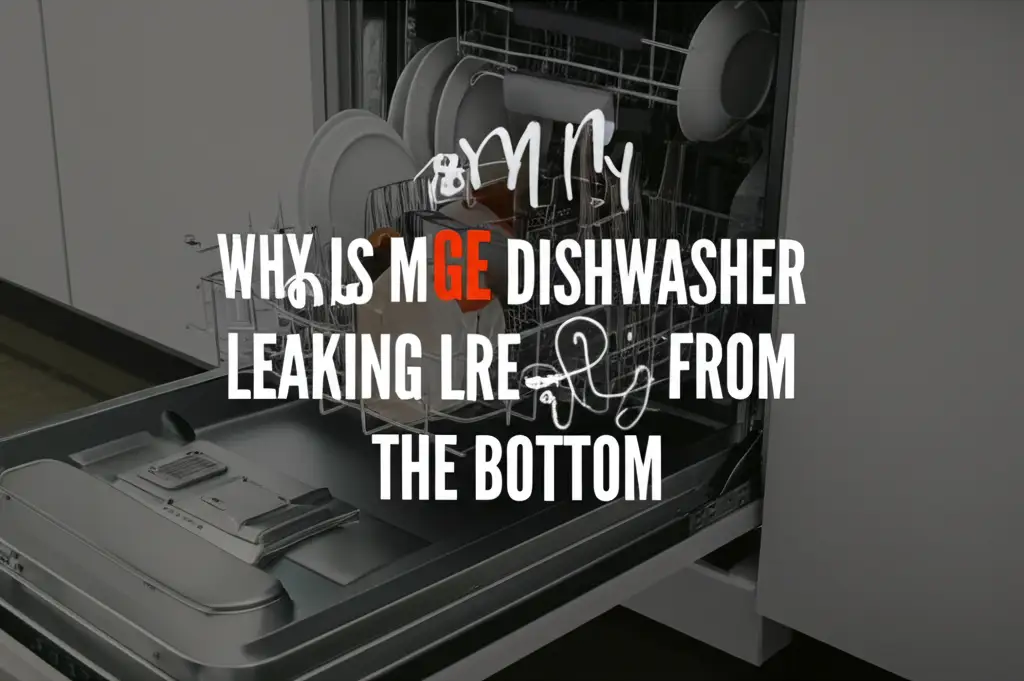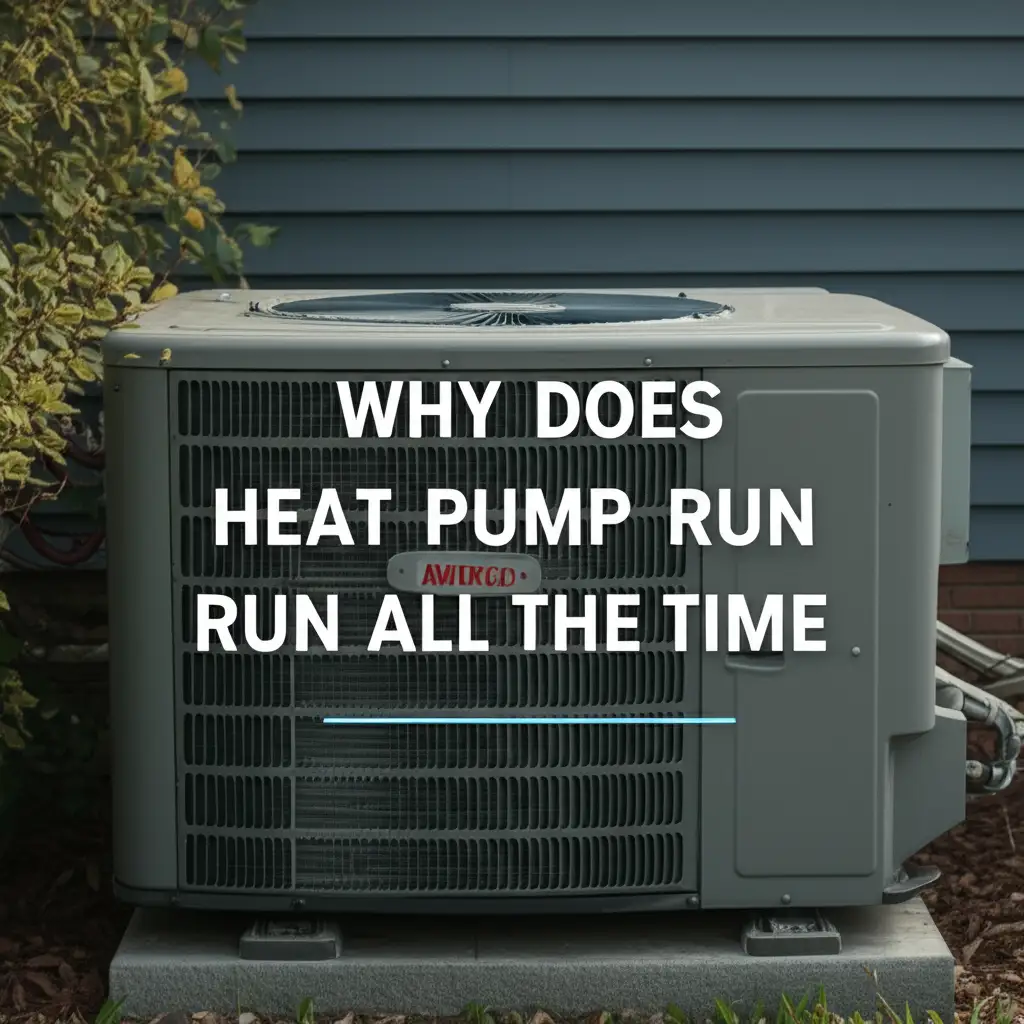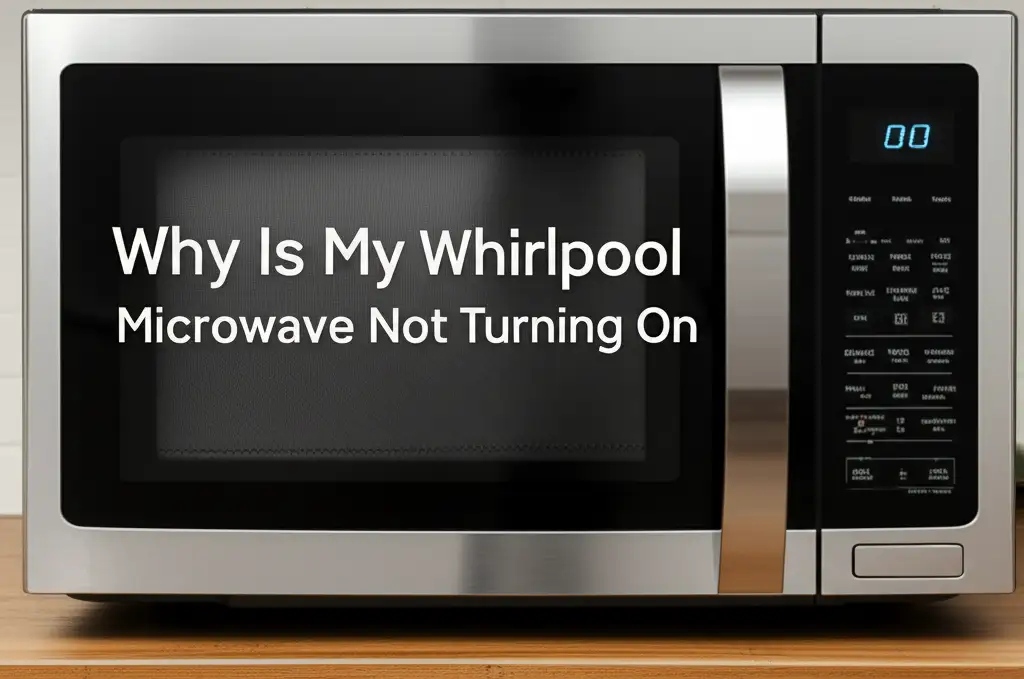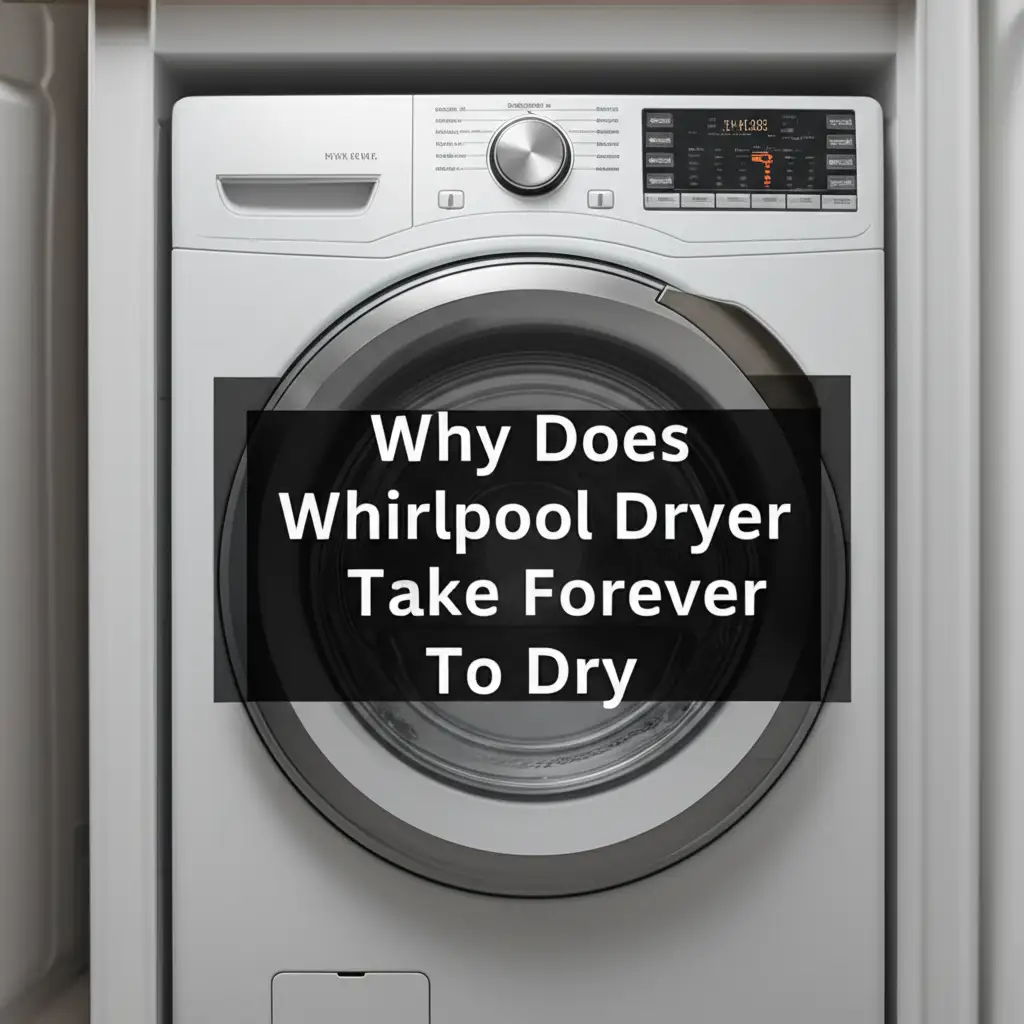· Katria Melrose · Home Improvement · 22 min read
Why Is My Ge Dishwasher Leaking From The Bottom

Stop the Drip: Why Your GE Dishwasher Leaks from the Bottom
Discovering a puddle of water around your dishwasher is never a pleasant surprise. If you own a GE dishwasher, and you notice it’s leaking from the bottom, it can cause immediate worry. This problem not only creates a mess but also poses a risk of water damage to your kitchen floor and cabinets. You need to address these leaks quickly to prevent bigger issues.
This guide explores the most common reasons a GE dishwasher leaks from the bottom. We will walk you through clear diagnostic steps. You will learn how to identify the source of the leak, perform simple repairs, and understand when to seek professional help. My goal is to equip you with the knowledge to tackle this common appliance issue effectively.
Takeaway
- Identify the exact leak source by careful observation.
- Check and tighten all hose connections first.
- Inspect door gaskets, seals, and the water inlet valve.
- Clear any clogs in the drain system.
- Perform regular maintenance to prevent future leaks.
A GE dishwasher leaking from the bottom usually points to issues with the water inlet valve, drain pump, hose connections, or a damaged tub or seal. Water often pools underneath when these components fail or become loose. Addressing these specific parts helps stop the leak.
Understanding Common Causes of Bottom Leaks in GE Dishwashers
A GE dishwasher leaking from the bottom can stem from various parts. It is important to know the potential culprits. Identifying the source helps you fix the problem correctly. Many components handle water during a wash cycle. Any fault in these can lead to a leak.
The first step is to recognize where the water comes from. Is it a slow drip or a steady stream? Does it happen during filling, washing, or draining? The answer helps narrow down the cause. Common areas for leaks include the water inlet system, the drain system, and internal seals or the tub itself. We will look at each area in detail.
Loose Hose Connections
Hoses connect your dishwasher to the water supply and the drain. Over time, these connections can loosen. Vibrations from the dishwasher’s operation contribute to this. A loose hose connection is a common cause of water pooling under the unit. The supply hose brings fresh water in. The drain hose carries dirty water out. Both can leak if their clamps are not tight.
I recommend checking the tightness of all hose clamps. You might find a simple twist with a screwdriver solves the problem. Sometimes, the hose itself can crack or develop small holes. This is less common but still possible. Always inspect the hose material for any visible damage. Ensure the hoses are not kinked, which can put stress on connections.
Damaged Gaskets and Seals
Gaskets and seals create watertight barriers inside your dishwasher. They keep water contained within the wash tub. The most noticeable one is the door gasket, or door seal. If it is cracked, worn, or misaligned, water can escape from the bottom of the door. This water often runs down the front and collects underneath the appliance.
Other important seals include those around the pump, motor, and heating element. These internal seals are harder to see. Over years of use, they can stiffen or degrade. When these seals fail, water leaks directly into the drip pan below the dishwasher. This often leads to a leak from the bottom of the unit. A worn pump seal is a frequent offender.
Faulty Water Inlet Valve
The water inlet valve controls the flow of water into your dishwasher. It is an electrically operated valve. This valve opens when the dishwasher needs to fill with water. If the valve is faulty, it may not close completely. This causes a continuous trickle of water into the unit. Eventually, this can lead to an overflow or a leak from the valve body itself.
A crack in the valve’s housing or a loose connection to the valve can also cause leaks. You often find the water inlet valve near the bottom front of the dishwasher. It usually connects to the main water supply line. Leaks from this valve are often consistent, even when the dishwasher is not running. This helps in diagnosis.
Clogged Drain Line or Pump
A clogged drain line prevents water from exiting the dishwasher properly. If water cannot drain, it can back up. This overflow can push water past seals or out through the bottom. Food particles, grease, and debris accumulate in the drain hose over time. This creates a blockage.
The drain pump moves water from the tub to the drain line. If the pump is faulty or obstructed, water might not drain efficiently. This can also lead to backups and leaks. A damaged drain pump itself can leak directly from its housing. Sometimes, a clogged filter inside the dishwasher contributes to poor drainage. This forces water out where it should not go. If your GE dishwasher is holding water in the bottom, it is a strong sign of a drainage issue that could lead to leaks.
Tub or Pump Housing Cracks
While less common, the dishwasher tub can develop cracks. Extreme temperature changes or impact can cause this. A crack in the plastic or stainless steel tub will allow water to escape directly. This leak appears at the bottom. These leaks are often difficult to spot without pulling the dishwasher out.
Similarly, the pump housing, which is often plastic, can crack. The pump assembly is a critical part of the dishwasher’s water circulation system. Any breach in its housing will result in water leaking directly onto the floor beneath the appliance. These types of leaks are serious and usually require component replacement.
Overflow Pan Issues
Many dishwashers have a drip or overflow pan at their base. This pan collects small leaks from internal components. It helps prevent water from reaching your floor. If this pan fills up due to a persistent leak, water will eventually spill over the edges. This causes a noticeable leak on your kitchen floor.
The presence of water in the overflow pan indicates an internal leak. It could be from the pump, a hose, or a seal. The pan itself is not usually the source of the leak. It is a symptom of another problem. You must identify the component that is dripping into the pan. This will help you resolve the underlying issue.
Diagnosing GE Dishwasher Leaks: Step-by-Step
Finding the exact source of a leak in your GE dishwasher requires careful inspection. It can be tricky because water travels. What appears as a leak from the front might originate from the back. Taking a systematic approach helps pinpoint the issue. Prepare for some detective work, and gather a few basic tools.
Remember, a leaking dishwasher needs quick action. Water damage can be costly. Even small, persistent leaks can lead to mold growth or structural damage over time. My advice is to approach this task patiently. Don’t rush through the steps.
Safety First: Disconnect Power and Water
Before you touch any part of your GE dishwasher, prioritize safety. Electricity and water are a dangerous combination. Always disconnect the power supply to the dishwasher. You can do this by unplugging the unit or by flipping the circuit breaker. Locate the circuit breaker labeled for your kitchen or dishwasher. Turn it off.
Next, shut off the water supply. There is usually a shut-off valve under the sink near the dishwasher connection. Turn this valve clockwise until it is fully closed. This prevents any more water from entering the dishwasher. Once power and water are off, you can safely begin your inspection. This is a critical first step for any appliance repair.
Inspecting Hose Connections
With power and water off, begin by checking the hoses. Pull the dishwasher out from under the counter if possible. This gives you better access to the back. Look at the water supply hose that connects to the inlet valve. Check its connection point. Feel for dampness or visible drips.
Next, inspect the drain hose. This hose typically connects to the sink drain or a garbage disposal. Look at both ends of the drain hose. Ensure clamps are tight and secure. Examine the hose itself for any cracks, kinks, or punctures. Sometimes, the hose connection to the drain pump can be loose or damaged. A simple tightening might be all you need.
Checking the Door Gasket and Lower Seal
The door gasket is visible around the perimeter of the dishwasher door. Open the door and inspect it closely. Look for any tears, cracks, or signs of deterioration. Feel the gasket; it should be pliable, not stiff or brittle. Ensure it is seated properly in its groove. A misaligned gasket will not seal correctly.
The lower door seal, also called the tub seal or air gap gasket, is less obvious. It sits at the bottom edge of the door, just above the tub. This seal is crucial for preventing water from escaping under the door. Check for any damage or misalignment here. Water leaking from the bottom of the door often indicates a problem with these seals. Issues with these seals are common across brands, similar to problems found when a Samsung dishwasher leaks from the bottom of the door or a KitchenAid dishwasher leaks from the bottom of the door.
Examining the Water Inlet Valve Area
The water inlet valve is usually at the bottom front or side of the dishwasher. It is often covered by a toe kick panel. Remove this panel to gain access. Look for any signs of water around the valve body itself. Check where the water supply line connects to the valve. Also, inspect the hose that runs from the valve into the dishwasher.
A common sign of a faulty inlet valve is a slow, constant drip. This drip can happen even when the dishwasher is not running. This indicates the valve is not closing completely. You might see mineral deposits or rust stains if the leak has been ongoing. If you suspect the valve, you might need to run a quick test cycle with the panel off. Watch for leaks directly from the valve.
Looking for Tub Cracks or Damage
While rare, a cracked dishwasher tub can cause a bottom leak. This is more common in plastic tubs but can occur in stainless steel ones too. You may need to pull the dishwasher out and carefully inspect the entire tub. Look for hairline cracks, especially around the heating element, sump, or drain areas. Use a flashlight for better visibility.
Also, examine the sump assembly. This is the part at the very bottom of the tub that collects water before it drains or is pumped out. The seal between the sump and the tub can degrade. The plastic housing of the sump itself can crack. Any damage here will lead to water escaping directly underneath the appliance. These types of leaks are typically constant during a wash cycle.
Addressing Leaks from Hose Connections and Valves
Once you have identified that your GE dishwasher is leaking from a hose or valve, the repair process is often straightforward. These components are usually accessible. They do not require specialized tools beyond common household items. Timely action prevents minor issues from becoming major water damage problems.
It is always a good practice to turn off the water supply and disconnect power before any work. This ensures your safety. Remember, even a small drip can lead to significant issues over time. Fixing these leaks promptly saves you money and hassle in the long run.
Tightening Water Supply Hoses
The water supply hose brings fresh water to your dishwasher. It connects to the water inlet valve. This connection is a common leak point. Over time, vibrations from the dishwasher can loosen the connection. This results in a slow drip or a more significant leak.
To fix this, first, turn off the water supply to the dishwasher. Use an adjustable wrench or pliers to gently tighten the nut connecting the water supply line to the inlet valve. Do not overtighten, as this can strip the threads or damage the valve. Feel the hose itself for any signs of brittleness or cracks. If the hose is old or damaged, consider replacing it entirely.
Replacing Inlet Valve Hoses
Some GE dishwashers have a short hose that connects the inlet valve to the main wash system. This internal hose can also develop leaks. If you see water dripping directly from the inlet valve area, but the external supply line is dry, this internal hose might be the culprit. These hoses are typically reinforced. However, wear and tear can still lead to leaks.
To replace it, you will need to access the inlet valve, usually by removing the toe kick panel. Disconnect the old hose and attach the new one, securing both ends with clamps. Ensure the clamps are tight but not crushing the hose. Use high-quality replacement parts for durability.
When to Replace the Water Inlet Valve
If you have tightened all connections and checked the internal hoses, but water still leaks directly from the water inlet valve’s body, the valve itself is likely faulty. The internal components can fail. Cracks can develop in the plastic housing. A faulty valve might also cause your GE dishwasher to not fill with water at all, or to fill continuously.
Replacing the water inlet valve is a moderately easy DIY repair. You will need to purchase a new GE-specific replacement part. Disconnect power and water. Disconnect the supply line and the internal hose. Unmount the old valve and install the new one. Ensure all connections are secure. Test for leaks immediately after installation.
Fixing Leaks Caused by Seals and Gaskets
Seals and gaskets are crucial barriers that prevent water from escaping the dishwasher’s tub. They are made of rubber or silicone. Over time, these materials can degrade, crack, or lose their elasticity. This degradation leads to leaks, often appearing around the door or underneath the appliance. Addressing these worn seals is a common repair for bottom leaks.
These repairs vary in difficulty. Some, like replacing a door gasket, are simple. Others, like pump seals, require more disassembly. Always ensure you have the correct replacement part for your specific GE dishwasher model. This ensures a proper fit and a lasting repair.
Replacing the Door Gasket
The door gasket creates a watertight seal when the dishwasher door is closed. If your GE dishwasher leaks from the bottom of the door, or if water puddles directly in front of the unit, the door gasket is a prime suspect. Inspect it for visible damage, hardening, or misalignment.
Replacing a door gasket is usually straightforward. You can often pull the old gasket out of its groove. Clean the groove thoroughly. Then, press the new gasket into place, ensuring it is seated evenly all around the door frame. Some gaskets require a small amount of adhesive at the corners. Close the door firmly after installation to help the new gasket seat properly. This fix is similar across many models and brands, including issues that cause a Frigidaire dishwasher to leak from the bottom of the door.
Addressing Pump and Motor Seals
Below the dishwasher tub, you will find the pump and motor assembly. These components have various seals that keep water contained within the circulation system. Over many wash cycles, these seals can wear out. A leaking pump seal or motor seal will cause water to drip directly into the drip pan or onto the floor underneath the dishwasher.
Accessing these seals often requires tilting the dishwasher or removing it completely. You may need to remove panels to reach the pump and motor. The repair involves disassembling parts of the pump or motor to replace the specific seal. This is a more involved repair. If you are not comfortable with it, a professional technician might be needed. Proper reassembly is key to prevent future leaks.
The Importance of a Tight Sump Seal
The sump is the basin at the very bottom of the dishwasher tub. It collects water for the wash and drain cycles. The sump connects to the main tub with a large seal. If this seal becomes loose, cracked, or corroded, water will leak from the tub directly into the base of the dishwasher. This often appears as a leak from the very center bottom of the appliance.
Checking the sump seal typically requires removing the lower spray arm and filter assembly from inside the tub. You can then inspect the seal around the sump area. If the seal is compromised, it usually means replacing the entire sump assembly, as the seal is often integrated. This is a more complex repair. It often involves disconnecting wiring and hoses from beneath the dishwasher.
Troubleshooting Drain System Leaks
A common misconception is that leaks only happen when water fills the dishwasher. However, the drain system is equally prone to leaks. If your GE dishwasher leaks during or after the draining cycle, the problem likely lies with the drain hose, pump, or related connections. Water that cannot properly exit the appliance can back up and find its way out through weak points.
Addressing drain system leaks often involves checking for clogs. It also means inspecting the physical integrity of the drain components. These issues can also lead to other problems, such as a GE dishwasher holding water in the bottom. Pay close attention to the sound your dishwasher makes during draining. Unusual noises can indicate a problem with the pump.
Clearing a Clogged Drain Hose
The drain hose carries dirty water from the dishwasher to your sink drain or garbage disposal. Clogs are very common in this hose. Food particles, grease, and soap residue can build up inside. A partial clog restricts water flow. This causes water to back up into the tub. A full clog can lead to immediate overflow or pressure build-up. This pressure can force water out through connections that are not perfectly sealed.
To check for a clog, first, turn off the dishwasher and disconnect the power. Disconnect the drain hose from both the dishwasher and the sink/disposal. Inspect the hose for any visible blockages. You can often clear smaller clogs with a long brush or by flushing the hose with water. For stubborn clogs, you might need to use a drain snake. Ensure the hose is free of kinks after reinstalling.
Inspecting the Drain Pump
The drain pump pushes water out of the dishwasher. If the pump itself is faulty, it can leak. Cracks in the pump housing or a worn pump seal are common culprits. A faulty pump might also make strange noises or fail to drain water completely. When the pump cannot move water, the water level rises in the tub. This can cause leaks.
Accessing the drain pump usually requires tilting the dishwasher back or laying it on its side. Locate the pump assembly, which is typically near the bottom of the unit. Inspect it for visible cracks or water residue. If the leak comes directly from the pump body, you will need to replace the entire drain pump assembly. This is a more involved repair that may require professional assistance if you are not comfortable with appliance mechanics.
Checking the Air Gap (if applicable)
Some dishwasher installations include an air gap. This small cylinder is typically located on your sink counter beside the faucet. Its purpose is to prevent contaminated drain water from siphoning back into your clean water supply. While not directly part of the dishwasher, a clogged air gap can cause water to overflow from its vent holes. This water then runs down into the cabinet and under the dishwasher.
To check the air gap, remove its cover on the countertop. Inspect the internal components for any debris or blockages. Clear out any visible gunk. Run your dishwasher’s drain cycle while observing the air gap. If water gushes out of it, the line from the air gap to the sink drain or garbage disposal is likely clogged. You will need to disconnect that line and clear it.
Dealing with Tub Cracks and Component Failures
While less frequent, severe leaks can result from physical damage to the dishwasher’s main structure or internal components. These issues often represent a more serious problem. They may require professional intervention or even a decision to replace the appliance. A cracked tub or a failed sump assembly are significant concerns.
These types of leaks are often consistent and visible from the moment the dishwasher starts filling with water. They are usually not intermittent like some seal or hose leaks. Recognizing these serious issues early can help you determine the best course of action.
Identifying Cracks in the Dishwasher Tub
A crack in the dishwasher tub is a direct path for water to escape. This is more common in older dishwashers with plastic tubs. However, extreme heat, impact, or manufacturing defects can also cause cracks in stainless steel tubs. If you’ve eliminated all other common leak sources, a tub crack might be the issue.
To find a tub crack, you will need to carefully inspect the interior of the tub. Remove the lower spray arm and filter assembly for better visibility. Use a bright flashlight and look for hairline fractures, especially around the base, corners, or near the heating element. Filling the tub with a small amount of water and watching for drips underneath can confirm the leak. Unfortunately, repairing a cracked tub is often impractical. Many times, it means replacing the entire dishwasher.
Repairing or Replacing the Sump Assembly
The sump assembly is the collection point for water at the bottom of the tub. It typically integrates the heating element, filter, and sometimes the pump. The seal between the sump and the main tub is critical. If this seal degrades or if the sump’s plastic housing cracks, water will leak directly from the bottom center of the dishwasher.
Replacing the sump assembly is a complex repair. It involves disconnecting various hoses, wires, and potentially the motor. You might need to tilt or pull out the dishwasher for access. Ensure you have the exact replacement part for your GE model. Improper installation can lead to more leaks. Due to the complexity, many homeowners opt for professional repair for this issue.
When Professional Help Is Needed
While many dishwasher leaks are DIY-friendly, some situations call for a professional appliance technician. If you have followed all troubleshooting steps and cannot identify the source, or if the repair involves complex internal components like the motor, sump, or control board, it’s wise to call an expert.
Professionals have specialized tools and diagnostic equipment. They also have the experience to quickly identify and fix obscure leaks. Replacing major components like the tub or motor can be costly. A technician can help you weigh the repair cost against the cost of a new appliance. Sometimes, the overall condition of the dishwasher might mean replacement is the more economical choice.
Preventive Measures to Avoid Future Leaks
After fixing a GE dishwasher leaking from the bottom, you will want to prevent future occurrences. Regular maintenance and proper usage habits can significantly extend the life of your appliance. They also reduce the risk of annoying and damaging leaks. Simple steps can make a big difference in keeping your dishwasher running smoothly and leak-free.
These preventive measures are not difficult or time-consuming. They involve basic cleaning and periodic checks. Incorporating them into your home maintenance routine can save you from unexpected puddles and costly repairs down the line. Think of it as routine care for an important appliance.
Regular Cleaning and Maintenance
Cleaning your dishwasher is crucial for preventing clogs and maintaining seal integrity. Food particles, grease, and hard water deposits build up over time. This buildup can clog filters, spray arms, and drain lines. A clogged system creates pressure. This pressure can force water past seals and connections, leading to leaks.
- Clean the filter: Locate your GE dishwasher filter. Many GE models have a removable filter at the bottom of the tub. Check your manual for where your GE dishwasher filter is located. Remove and rinse it under running water weekly or bi-weekly. Some older models might require scrubbing. Learn how to clean the filter in an old GE dishwasher.
- Run cleaning cycles: Use a dishwasher cleaner (like citric acid or specialized tablets) once a month. This helps remove mineral buildup and grease from internal components.
- Wipe down seals: Periodically wipe the door gasket and other visible seals with a damp cloth. This removes food debris and keeps the rubber pliable.
Proper Loading Habits
How you load your dishwasher impacts its performance and can prevent leaks. Overloading or improperly loading can obstruct spray arms. It can also block the soap dispenser. This leads to inefficient cleaning and potential overflows. Water might spray out of the tub if it hits something incorrectly.
- Do not overload: Give dishes space. Water and detergent need to circulate freely.
- Keep large items away from the door: Large platters or cutting boards can protrude. They can prevent the door from sealing properly. This causes water to splash out.
- Avoid blocking spray arms: Ensure nothing blocks the rotation of the spray arms. This ensures even water distribution and prevents pressure buildup.
- Pre-rinse heavily soiled items: While not always necessary, scraping large food particles off plates prevents clogs in the drain system. This reduces strain on the pump and hoses.
Inspecting Hoses and Connections Periodically
A proactive inspection of your dishwasher’s external components can catch problems early. Make it a habit to visually check hoses and connections a few times a year. This is especially true if you notice any changes in performance. Early detection can prevent small drips from becoming big floods.
- Check the supply hose: Look for any bulges, cracks, or signs of wear on the water supply hose. Feel around the connection points for any dampness.
- Inspect the drain hose: Ensure the drain hose is not kinked or crimped. Check its connections to the dishwasher and the sink drain/disposal for tightness.
- Look under the unit: Every few months, pull out the toe kick panel. Use a flashlight to peek under the dishwasher. Look for any signs of water, rust, or mineral deposits in the drip pan. This indicates a slow, internal leak that needs attention.





